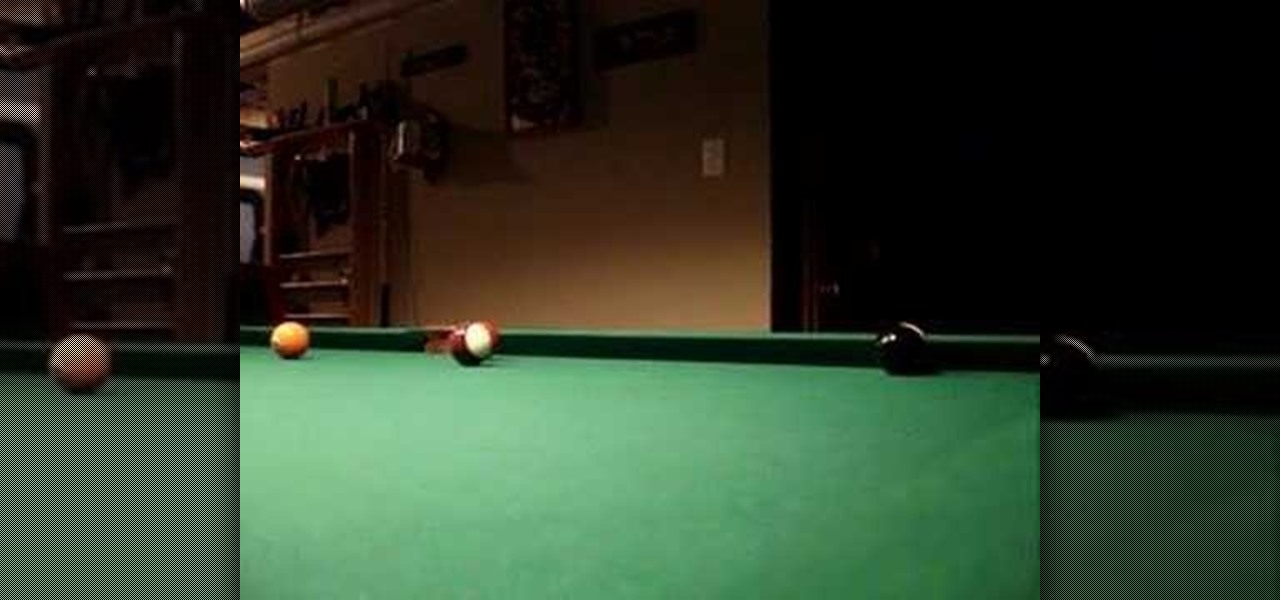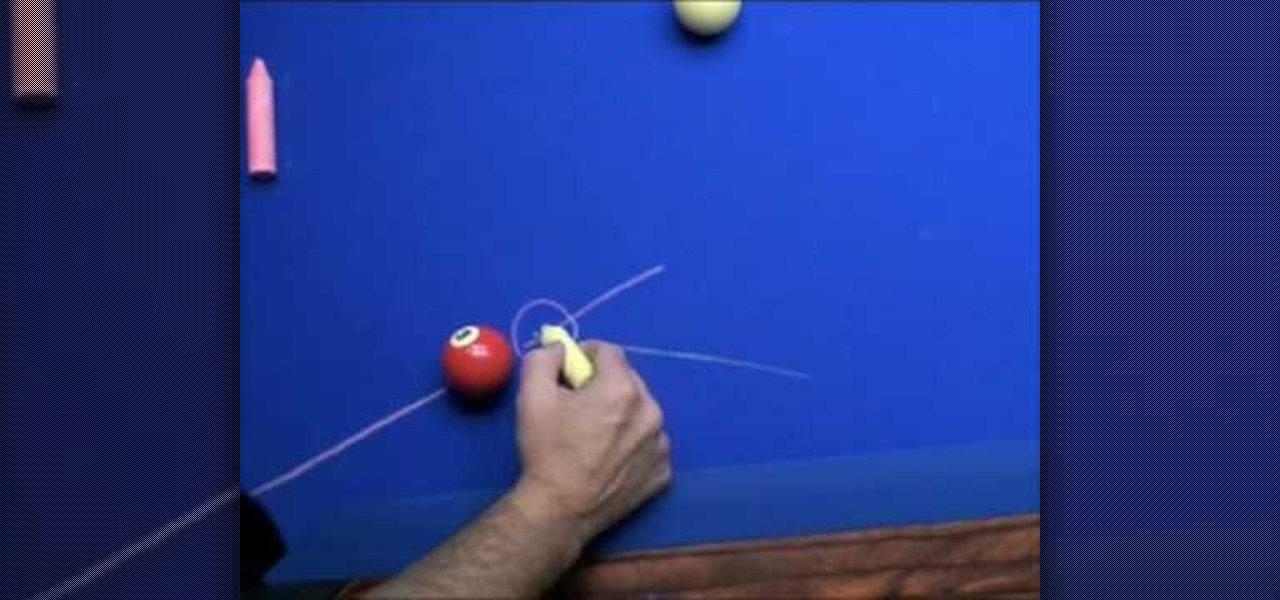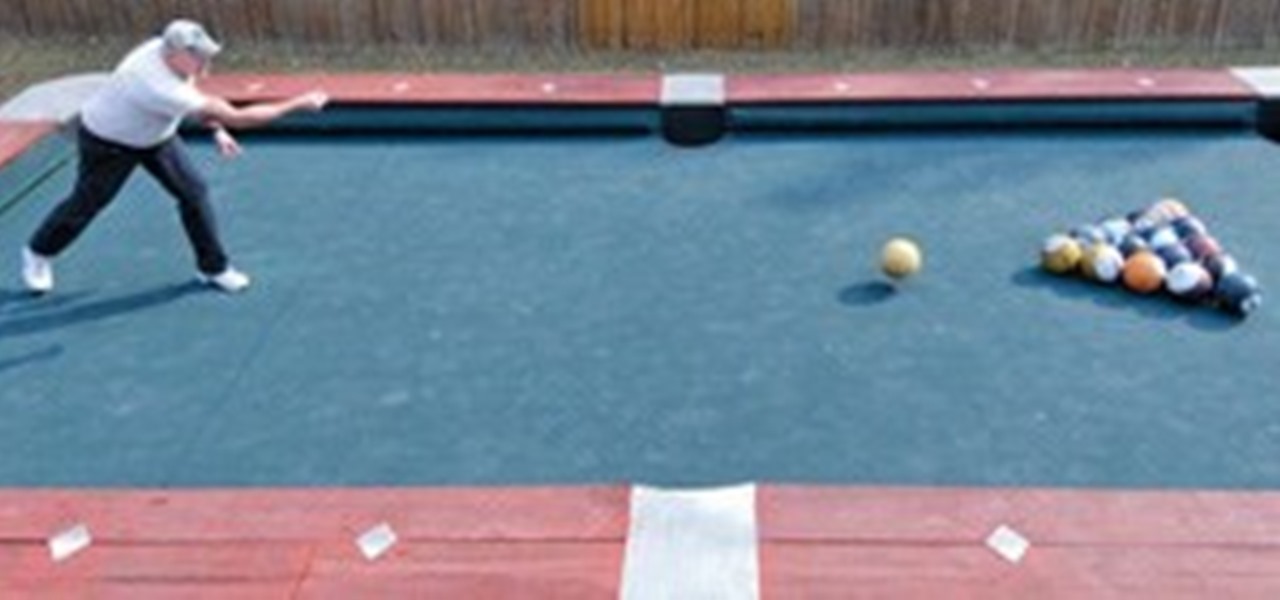Hot Billiards & Pool How-Tos


How To: Use a mechanical bridge when shooting pool
This pool shooting video shows two types of strokes using a bridge tool. It demonstrates the "elbow-out" and "elbow-in" strokes. Use a mechanical bridge when shooting pool.
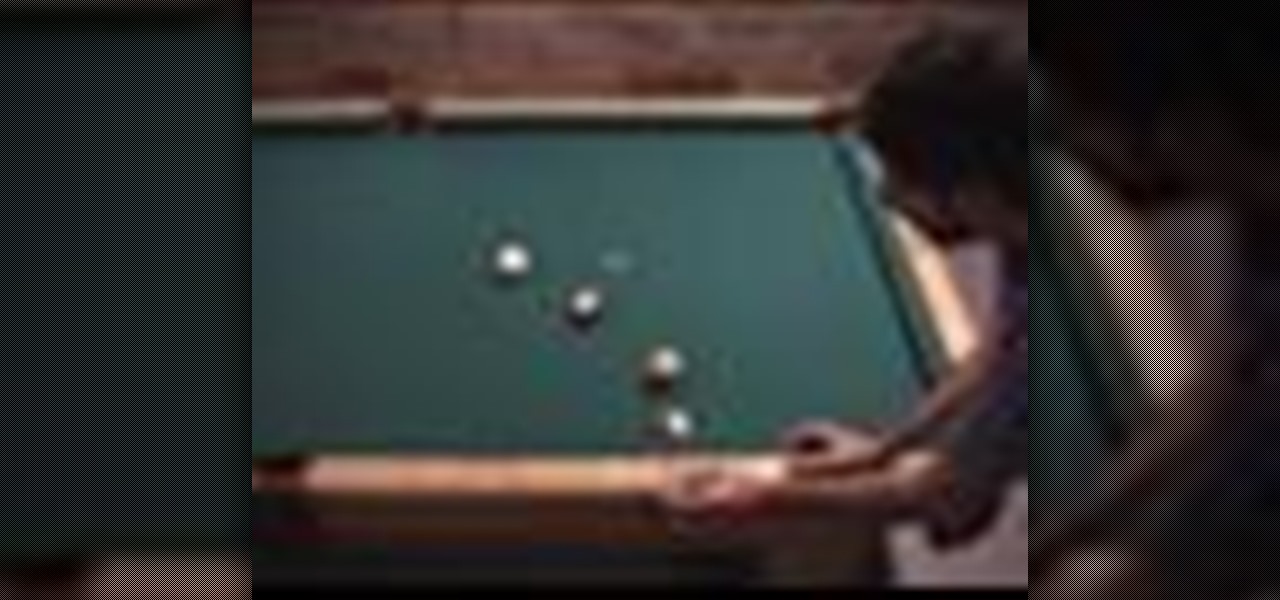
How To: Use the kick shot mirror image when shooting pool
This pool shooting video demonstrates how to hit the object ball when an opponent's ball is blocking the shot. Simply visualize an imaginary ball at the rail to achieve the proper angle, moving the object ball away from the opponent's. Use the kick shot mirror image when shooting pool.
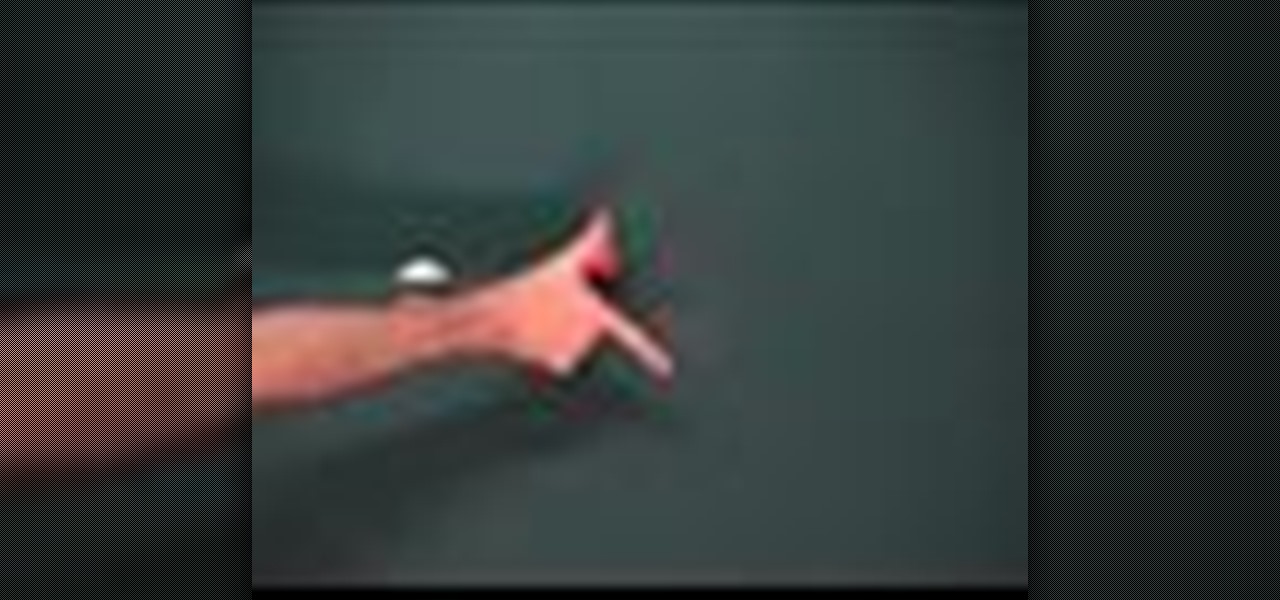
How To: Use the 90 degree rule with cut angles in pool
This pool shooting tutorial illustrates the 90 degree rule, which states that when the cue ball hits the object ball straight, the two balls will separate at 90 degrees. This is true regardless of the "cut angle," or angle the balls are apart from each other. Use the 90 degree rule with cut angles in pool.

How To: Adopt a proper stance when playing pool
In this pool shooting video proper stance is demonstrated, from angle of approach to follow through. First visualize the impact line from the object ball to the pocket, then create an aiming line, take some practice strokes, and finally shoot, keeping your head down. Adopt a proper stance when playing pool.

How To: Hit a cut shot and a carom shot in pool
This pool shooting video demonstrates two different ways to pocket a ball. In the first, the cue ball hits the object ball in and is deflected away from a scratch. In the second, the cue ball hits another ball in order to tip the object ball into the pocket without a scratch. Either technique will help you win you billiard game. Hit a cut shot and a carom shot in pool.

How To: Shoot a low speed bank shot
This pool shooting video shows the effect of a slow speed shot and mentions the difference between what the ball will do at slow and medium speeds. It is important to keep in mind that when trying to bank a shot at low speed the rebound angle will be wide. Shoot a low speed bank shot.

How To: Bank the ball when it is equidistant from the rails
This pool shooting video demonstrates how to bank the object ball off the rail into the pocket, when the object ball is at an equal distance from three rails. It also shows how to gauge the shot using the diamonds on the rails. Bank the ball when it is equidistant from the rails.

How To: Bank outside a cut angle, creating reverse English
In pool, a cut angle bank shot will have an amount of right spin. Use reverse, or right, English technique to decrease the rebound angle. By varying the amount of spin, you can change the angle of rebound and create a larger variety of rebound shots. Bank outside a cut angle, creating reverse English.
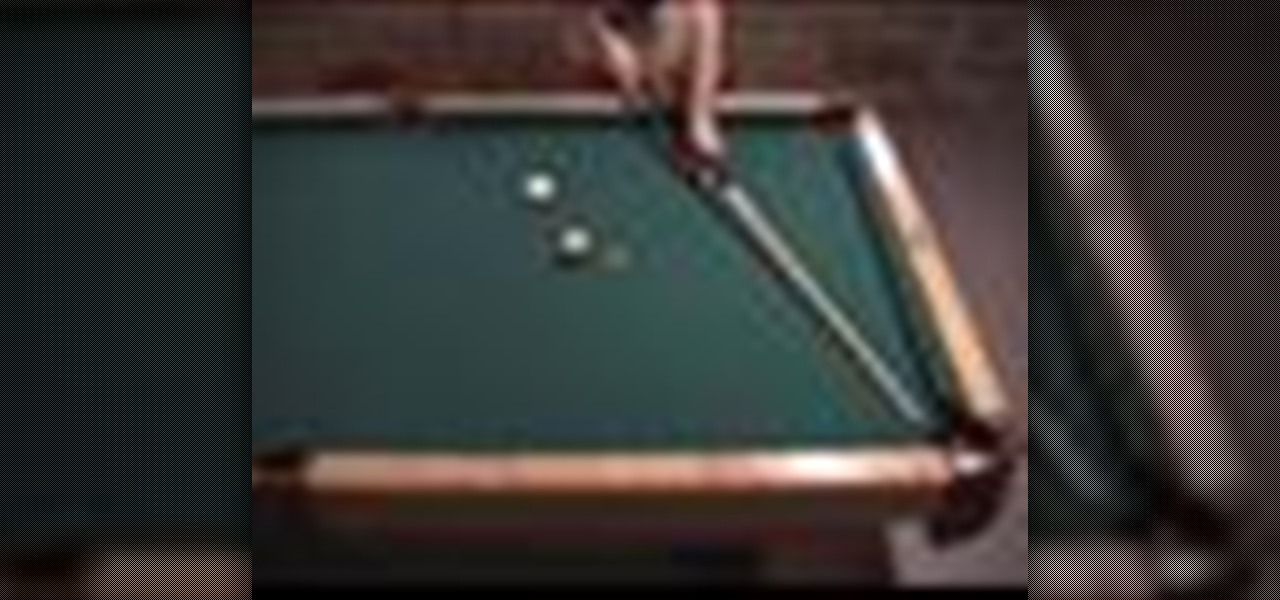
How To: Shoot a bank shot in pool with a parallel line
This pool shooting video shows how to use a parallel line to bank the object ball off the rail and into the pocket. Visualize a line between the two balls and the line parallel to the midpoint of the first line will be the aiming line. Shoot a bank shot in pool with a parallel line.

How To: Bank inside a cut, creating natural English in pool
This pool shooting video shows an inside cut angle and how to bank off the rail to pocket the ball. An inside cut will give the ball left-spin, a natural left English, which will increase the rebound angle allowing you to set up a wider variety of rebound shots. Bank inside a cut, creating natural English in pool.

How To: Shoot a combination shot in pool
In pool a combination shot involves shooting the cue ball at one ball in order to hit and pocket another. Approach a combination shot by visualizing imaginary aiming lines and finding the imaginary center of a ghost ball next to the first ball you want to hit. The cue ball should be hit toward the center of the ghost ball. Shoot a combination shot in pool.

How To: Use the 30 degree rule when shooting pool
This is another example of the 30 degree rule when shooting pool. It shows that the anticipated and actual paths of both balls are the same. With a solid knowledge of the 30 degree rule, you can accurately predict where the cue ball will go and set up you next shot. Use the 30 degree rule when shooting pool.
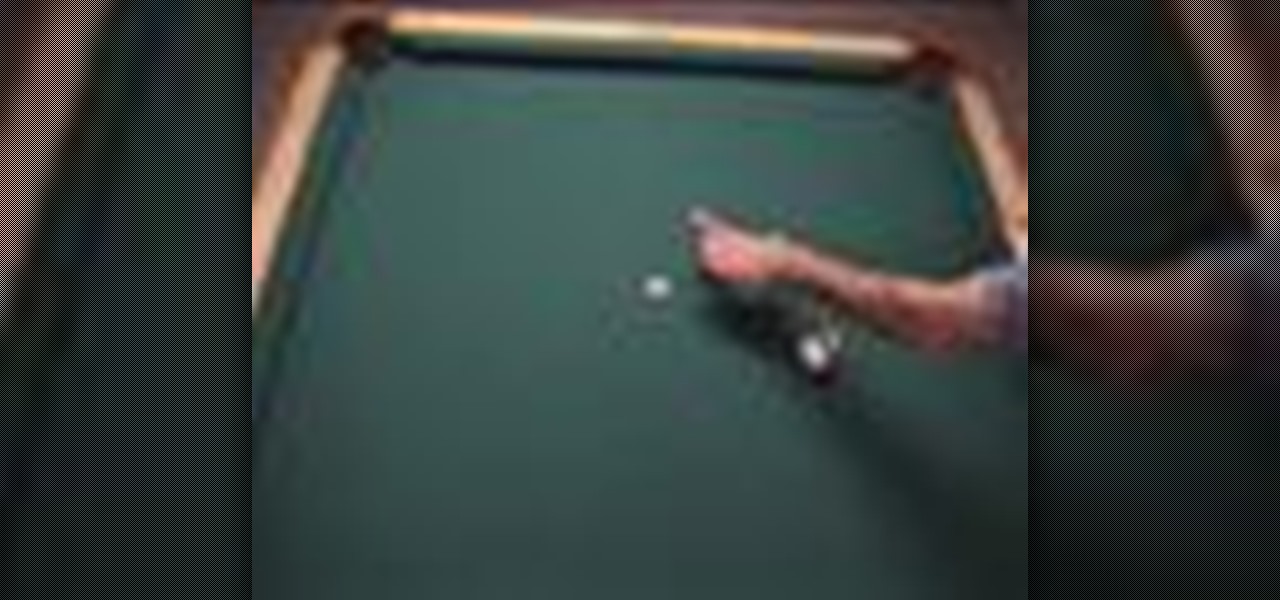
How To: Prevent a scratch in pool using the 90 degree rule
This video shows how to check for and prevent a scratch in pool by utilizing the 90 degree rule and sending the object ball into the correct pocket. Two techniques shown to are "follow" and "draw," hitting the cue ball above or below the center. Prevent a scratch in pool using the 90 degree rule.
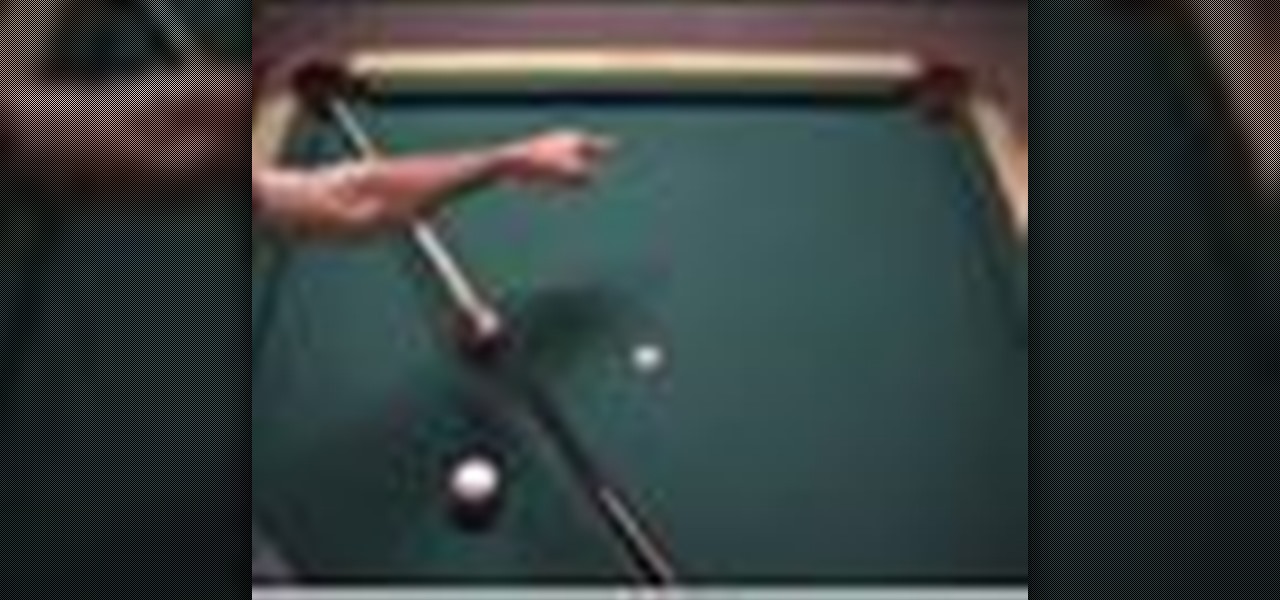
How To: Prevent a scratch in pool using follow
By using the 90 degree rule when shooting pool you can make the cue ball follow along a tangent line to determine perfectly where the ball will go and prevent scratch. The cue ball follows the path of the object ball and is deflected off the rail setting up the next shot. Prevent a scratch in pool using follow.
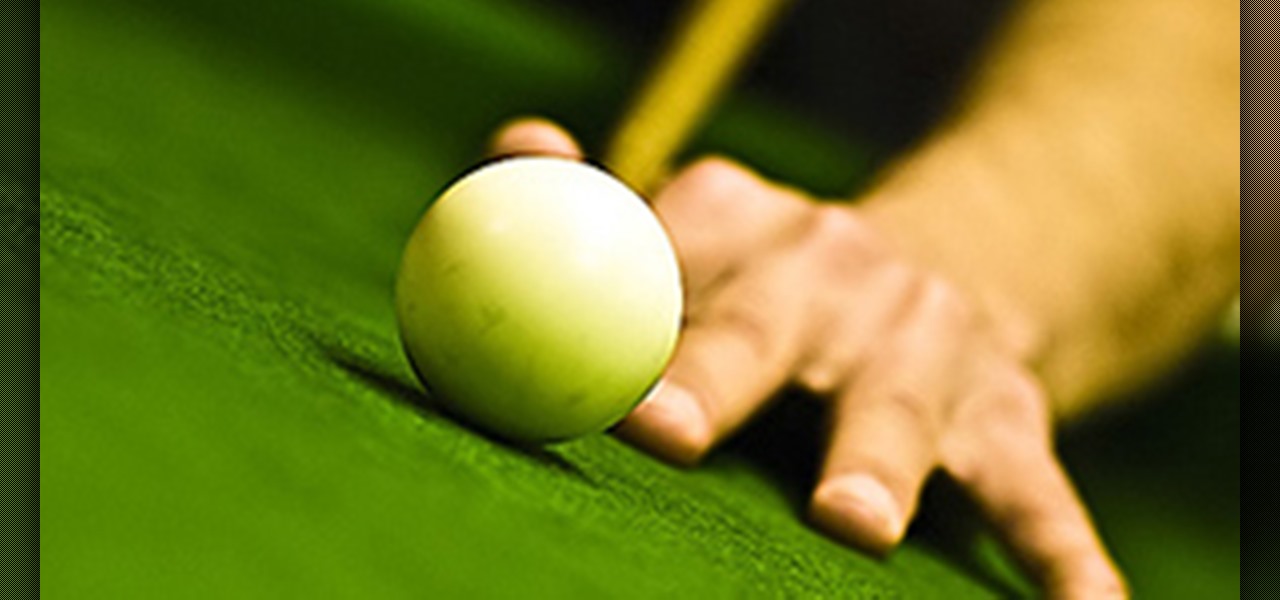
How To: Shoot a bank hustle shot in pool
This pool shooting tutorial demonstrates how to pocket an object ball that is frozen between a rail and the cue ball. A right English technique on the cue ball will transfer as a left English on the object ball, freeing it from the rail and helping it go into a pocket.
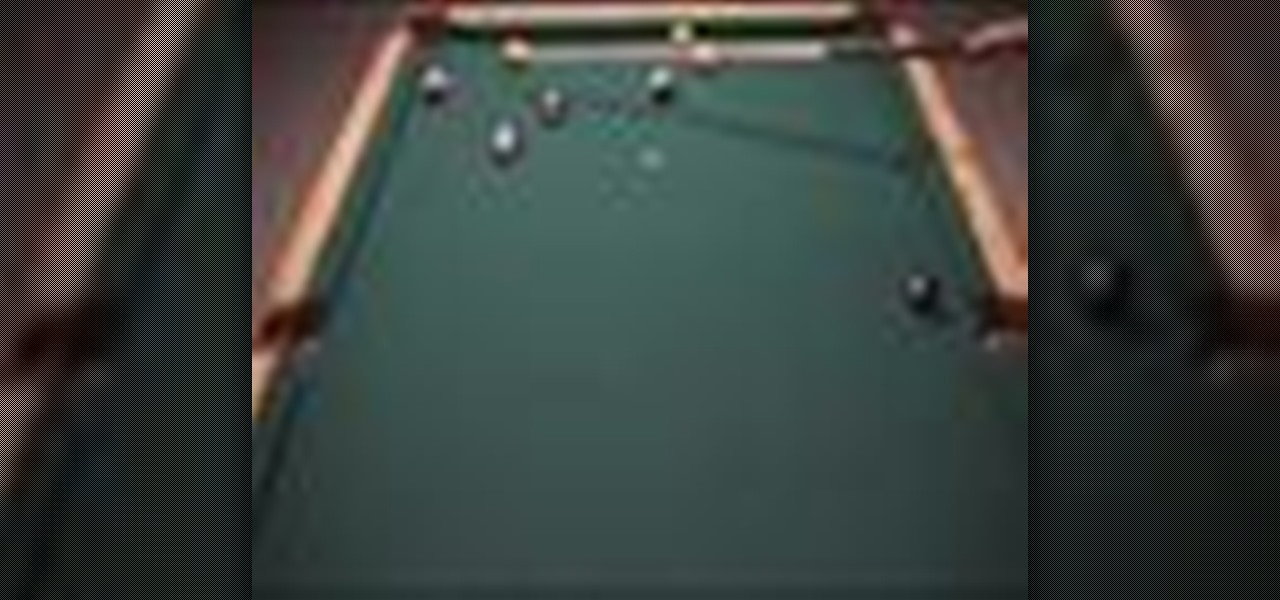
How To: Use reverse English to stop cue ball motion in pool
This pool shooting tutorial demonstrates how to control the cue ball using reverse English, opposite to the one that seems obvious. This will help line the ball up where you want it, preventing it from going too far down the table and allowing you to win the match.
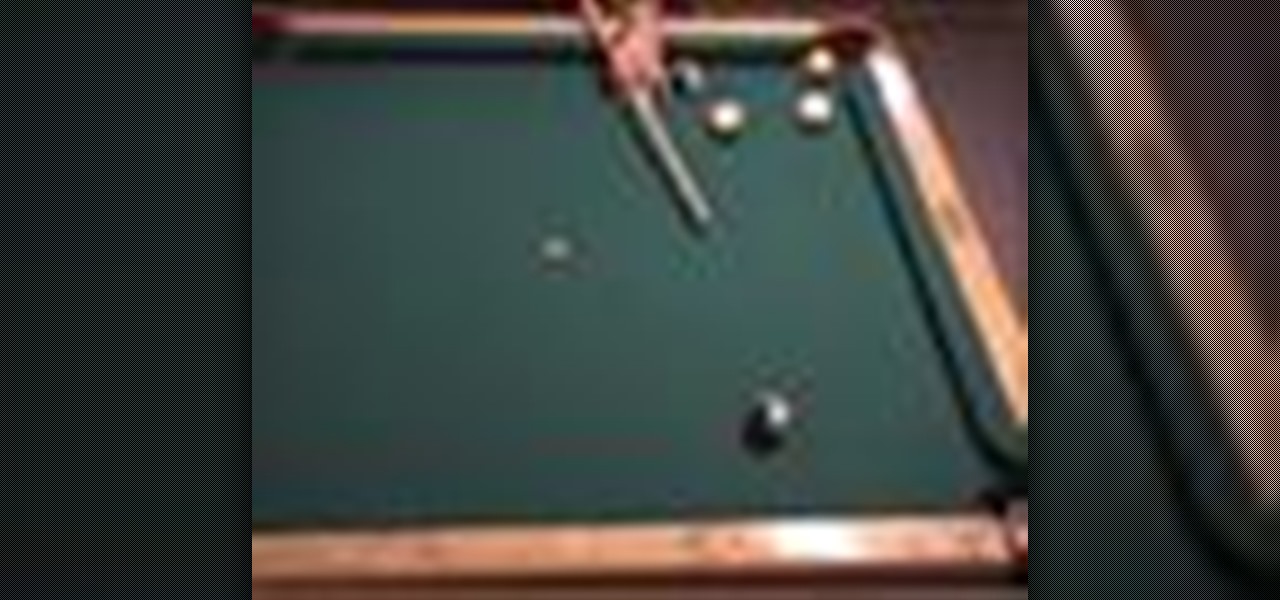
How To: Straighten a kick shot in pool using reverse English
A pool shooting tutorial. Using a slight right English in this example, the cue ball bypasses an obstacle ball and kicks off the rail, sending the object ball into the pocket. The use of reverse English reduces the rebound angle as the object ball is deflected off the rail which enables you to hit previously unreachable balls. Straighten a kick shot in pool using reverse English.

How To: Create an angled kick shot in pool using English
In this example the left English is used to create an angled kick pool shot. In other words, the cue ball is hit off center in order to cause the object ball to deflect off the rail at a wider than normal angle to hit a blocked ball. Create an angled kick shot in pool using English.

How To: Shoot a two-rail kick shot in pool
This pool shooting video demonstrates the best way to use the rails to deflect a frozen cue ball toward the object ball. To unfreeze the cue ball you can deflect it off the opposite rail, then it will deflect off the rail near the object ball and gently knock it into the pocket. Shoot a two-rail kick shot in pool.
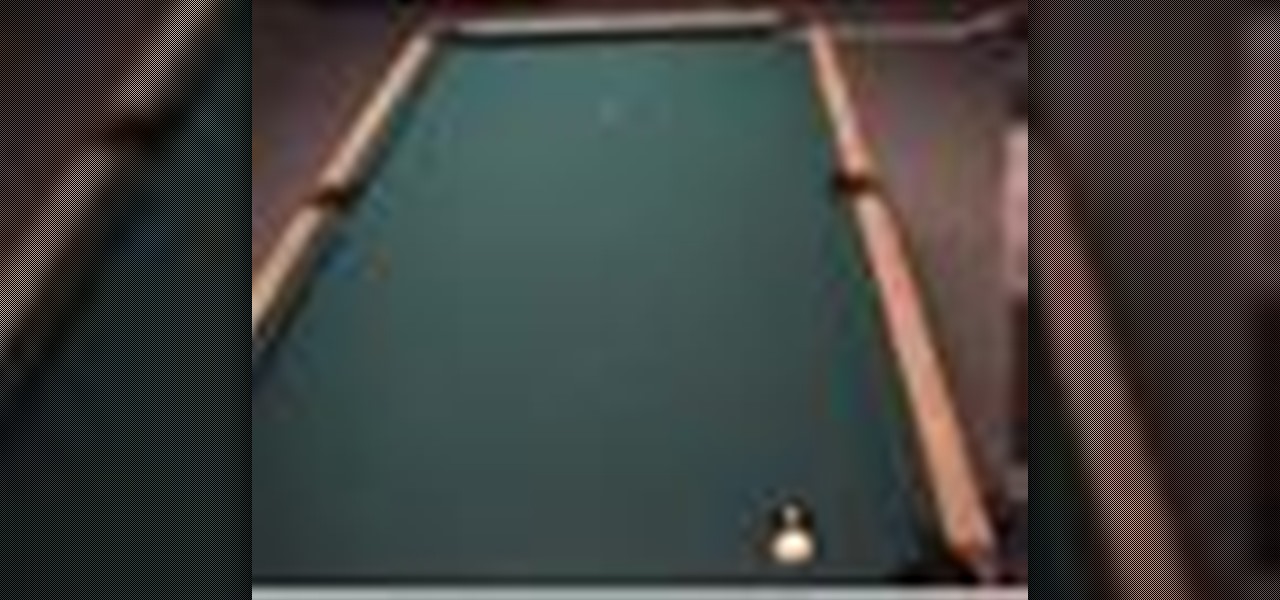
How To: Make a kick shot when the cue ball is frozen to a rail
This pool shooting video shows a way to use a cue ball that is frozen against the rail to hit the object ball directly into the opposite corner pocket without scratching. Hit with a high left English with an elevated cue, to deflect the cue ball off the rail just enough to hit the object ball into the corner pocket. Make a kick shot when the cue ball is frozen to a rail.

How To: Shoot a frozen cue ball kick shot
In another shot from the film "Pool Hall Junkies" the cue ball is frozen to the object ball. However it is demonstrated how to deflect the cue ball off the opposite rail to pocket the object ball. Shoot a frozen cue ball kick shot.

How To: Shoot the cue ball into a frozen ball combination
This tutorial shows two different ways to shoot a combination in pool where one element is a couple of balls that are frozen together. You can shoot the cue ball so that hits the lone ball, then deflects off the rail to hit the frozen balls, or you can do it in two shots. Using two shots is the more ordinary way of pocketing a ball and lining up the cue ball for the next shot, but it isn't as exciting. Shoot the cue ball into a frozen ball combination.

How To: Avoid the near rail on a corner pocket pool shot
This video shows tips on how to avoid hitting the near rail when shooting pool in order to put the ball into a corner pocket. Aim away from the rail that near the ball, toward the inner wall of the pocket. However, even if you accidentally hit the near rail, hitting the ball as soft as possible will still allow it to go in. Avoid the near rail on a corner pocket pool shot.

How To: Visualize the 90 degree rule in pool
This video illustrates how to use your own hand to help visualize the 90 degree rule when shooting pool and determine where the cue ball and the object ball will go, so you don't scratch. The thumb and forefinger spread out in an "L" shape will effectively predict the directions the cue ball and the object ball will take. Visualize the 90 degree rule in pool.
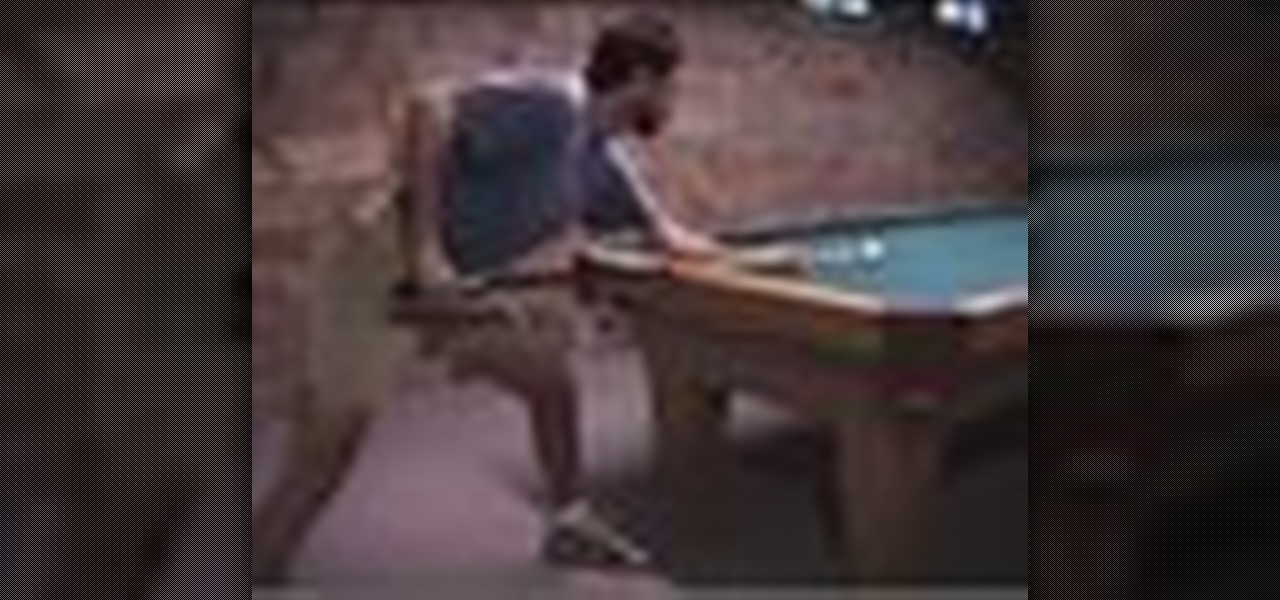
How To: Stand for a power break when shooting pool
This pool shooting video demonstrates the proper stance for a power break, or shooting the cue ball at the triangle form at the beginning of a game. Your feet should be wide apart, body weight forward, make several practice shots, and a strong shot with straight follow through. By using proper technique, you will open any billiard game with a statement. Stand for a power break when shooting pool.

How To: Plan a shot in pool
This video demonstrates good technique for planning and executing a pool shot, beginning with the 90 degree rule or the 30 degree rule. First visualize the aiming and impact lines, then the tangent line where the cue ball will go. Decide how fast to shoot depending on how far the ball is from the pocket. Select your hand position then execute the stroke, keeping your head down. Plan a shot in pool.

How To: Shoot a Right English shot in pool
This video demonstrates the "Right English" technique in shooting pool. It involves hitting a cue ball to the right of the center, causing the ball to deflect to the right, a fundamental technique for any billiards player. Shoot a Right English shot in pool.

How To: Shoot a Left English shot in pool.
This video shows how to use "Left English" when shooting pool. This simply means hitting to the left of the center of the cue ball, which causes the cue ball to deflect off the rail to the left, a fundamental technique for any billiards player. Shoot a Left English shot in pool..

How To: Visualize the cue ball contact point
In a difficult shot in pool, the video suggests visualizing a helper or "ghost" ball to determine where to aim. The centers of the ghost ball and the object ball should be in line with the target pocket. When hit the cue ball should stop in the place of the ghost ball for a successful shot. Visualize the cue ball contact point.
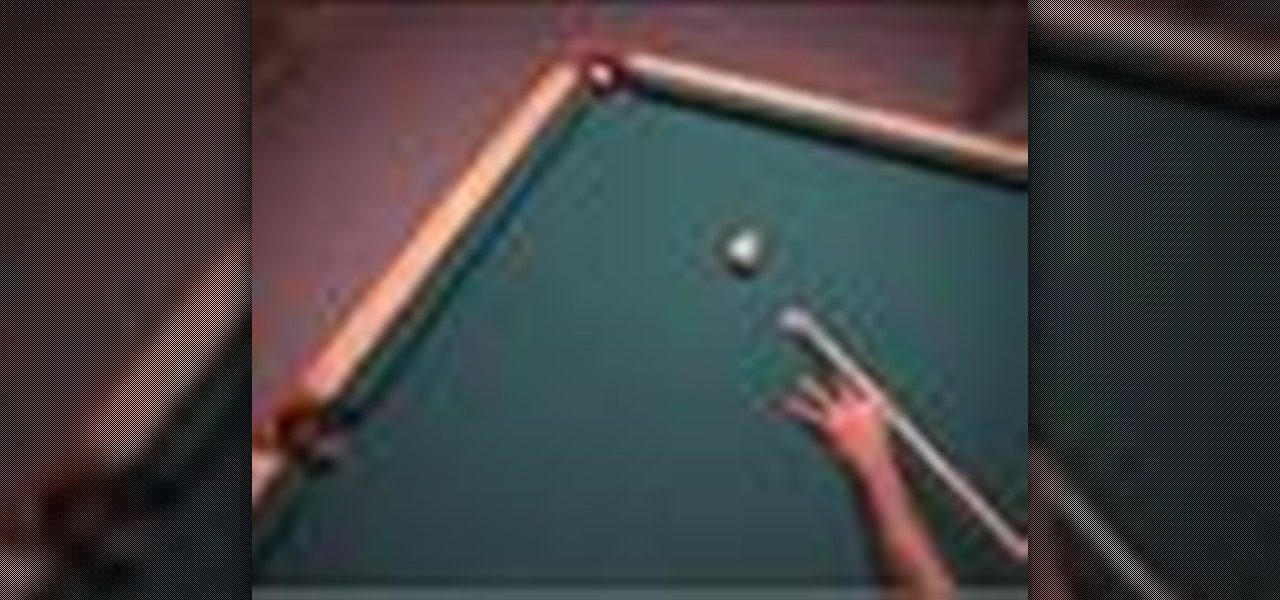
How To: Make the cue ball stop after it hits the object ball
In a special case of the 90 degree rule where there is no cut angle, the cue ball will transfer its speed to the object ball on impact. The cue ball will push the object ball into the pocket, but stop before falling in itself. This is known as a "stop shot" or "stun shot". Make the cue ball stop after it hits the object ball.
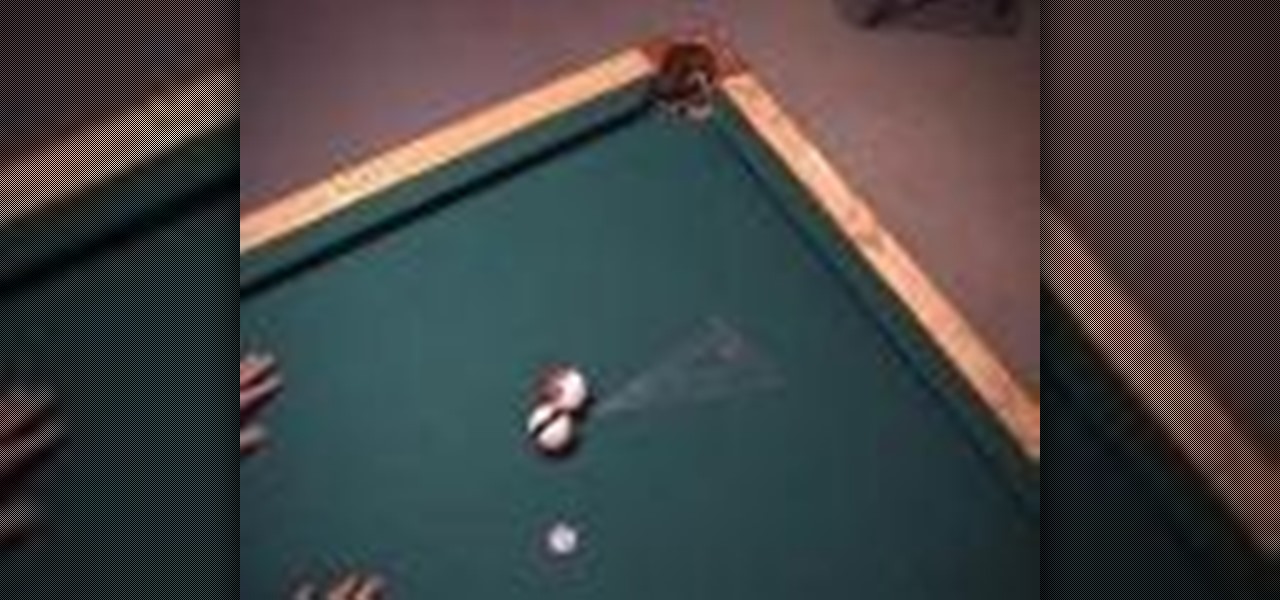
How To: Visualize the 30 degree rule using your hand
Similar to the 90 degree rule, the 30 degree rule is demonstrated in this video. Your two forefingers in a V-shape are the best tools to use for visualizing this angle.

How To: Make a shot along the rail
This is a quick demonstration of how to pocket a ball with a shallow angle range. Use the rails to help guide the ball, hitting the cue ball softly. If you hit the ball with speed, the rail will impart English on the object ball, and the ball will rattle away from the pocket. Make a shot along the rail.

How To: Make a stun shot
This is a quick demonstration of the "stun" shot. This shot uses the 90 degree rule to pocket the object ball when it isn't lined up with the pocket and predict the path of the cue ball. Make a stun shot.

How To: Make a straight shot using follow
With this simple technique the cue ball will follow the path of the object ball without scratching. If both balls are lined up with the pocket, an off-center hit will help in pocketing the object ball but not the cue ball preventing a scratch and lining up the next shot. Make a straight shot using follow.

How To: Pocket your ball when it is blocked by opponent's ball
This video demonstrates how to deal with an opponent's ball that is directly blocking the pocket. In order to put one of your own balls into the pocket, it may be necessary to shoot your object ball at the one blocking the pocket, making them both go in. Pocket your ball when it is blocked by opponent's ball.
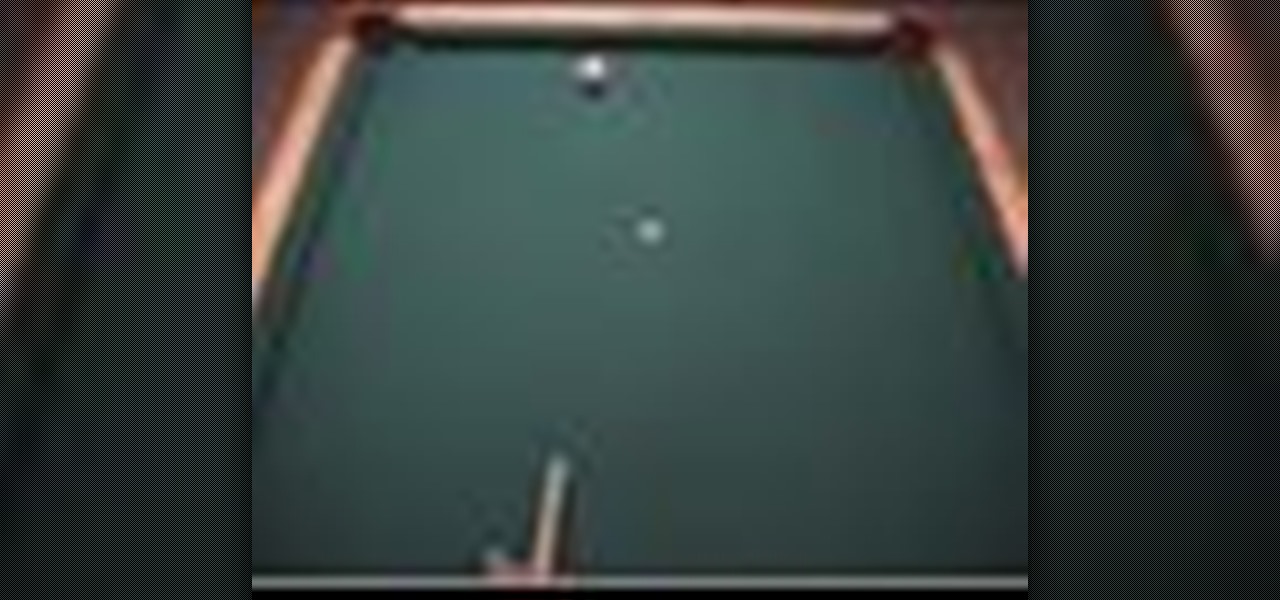
How To: Make an English curve with an elevated cue
This video makes you aware of the possibility of curving the ball slightly with an elevated cue stick. The elevated cue stick striking down on the cue ball will cause a very slight curve in the direction of whichever English technique you use. This video is good for those who are just getting acquainted with the English technique. Make an English curve with an elevated cue.
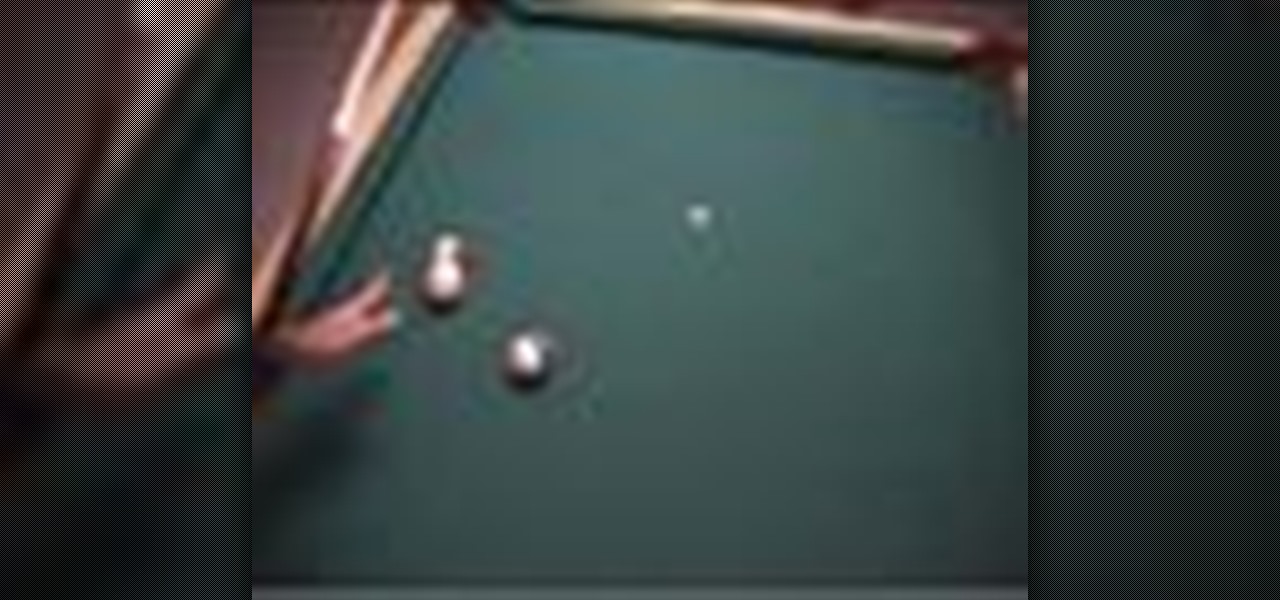
How To: Over-cut a shot to compensate for throw
When shooting cut shots you have to over compensate a shot so that the sideways friction of the cue ball does not push the object ball off the intended path. To combat the throw, you must aim a little wide, as shown by the video. Over-cut a shot to compensate for throw.

How To: Use delay in a follow shot to your advantage
This video demonstrates how to be aware of the possibility of the delayed curving of a follow shot, and how to use this to your advantage. The curving occurs when the cue ball is hit at high speeds, and the type and speed of the curve are dependent on the speed of the shot. Use delay in a follow shot to your advantage.

How To: Use the 30 degree rule to determine cue ball direction
This video illustrates an example of using the 30 degree rule and the path the cue ball will take. It shows the anticipated path when the ball is hit with medium speed, and it demonstrates the curve effect when the ball is hit hard. Use the 30 degree rule to determine cue ball direction.

How To: Position the cue ball for a side pocket shot
This video demonstrates the usage of several techniques to achieve a seemingly difficult side pocket shot. The rails are used to prevent a scratch. By going over all the different techniques, this video ensures that you will always have a way to sink a pocket shot. Position the cue ball for a side pocket shot.



